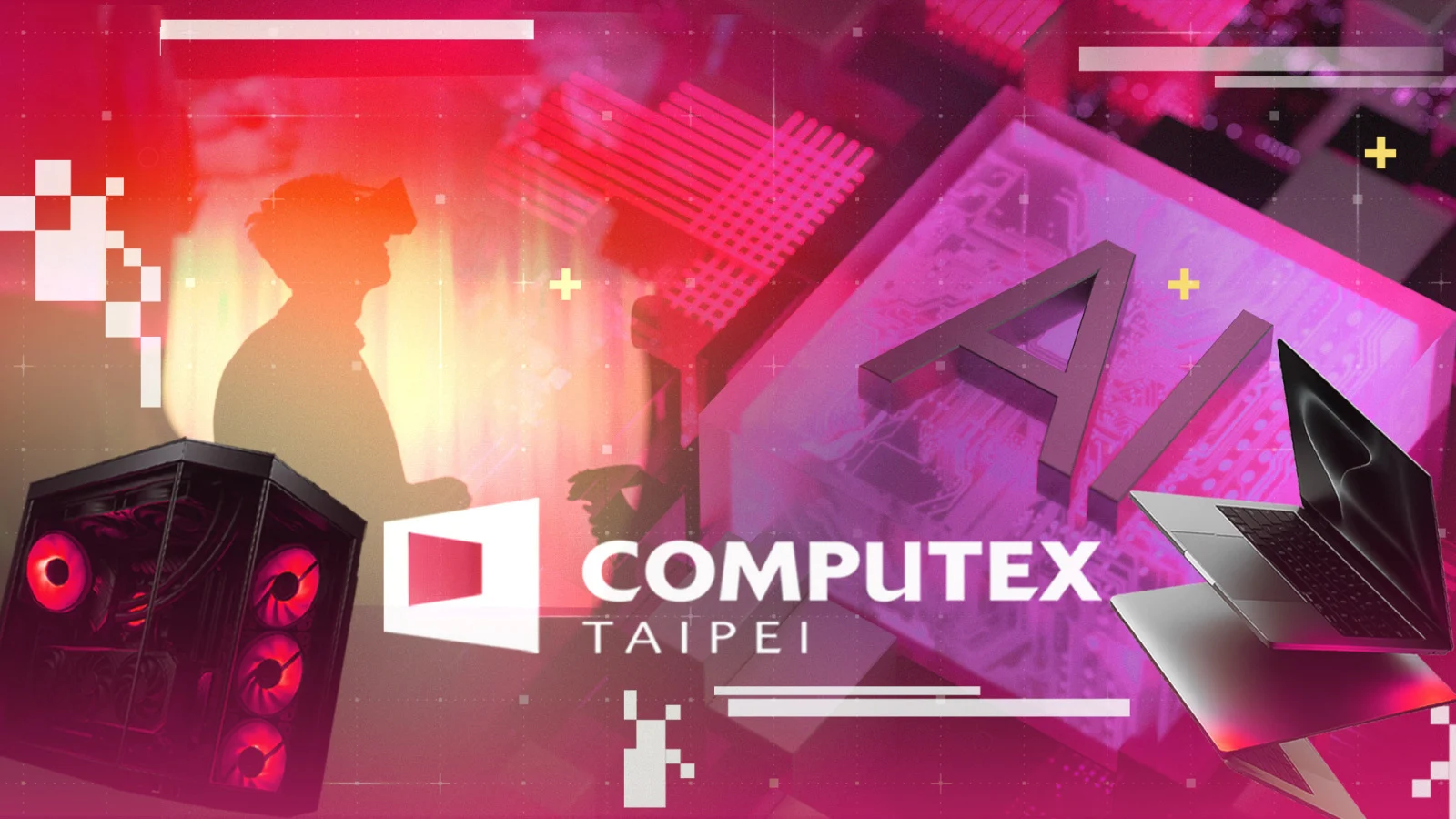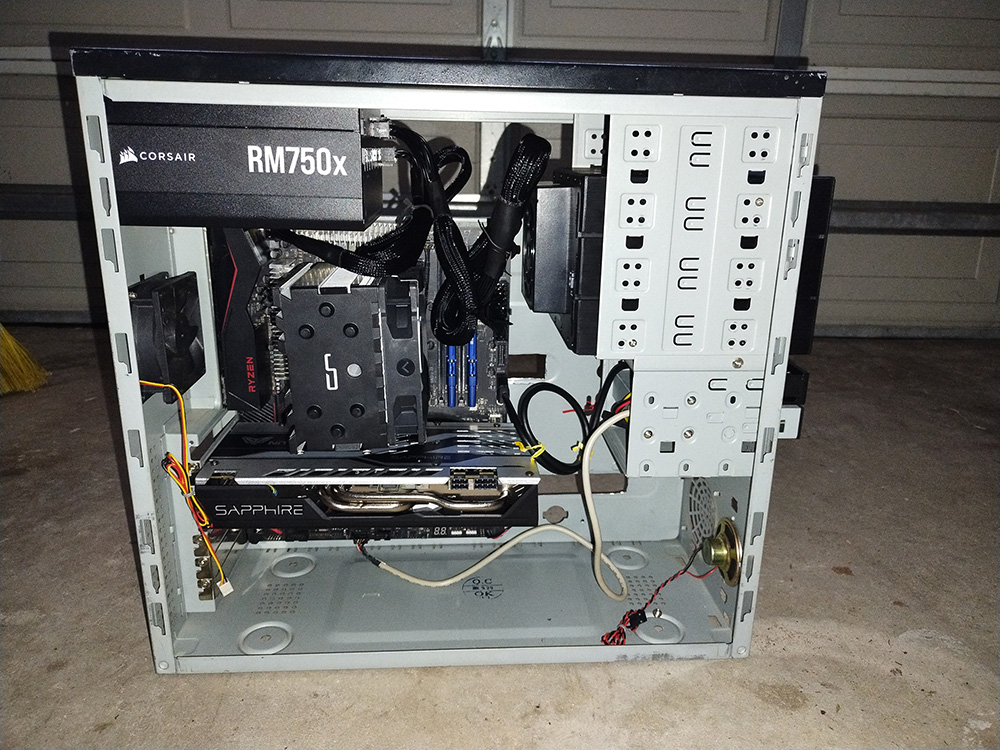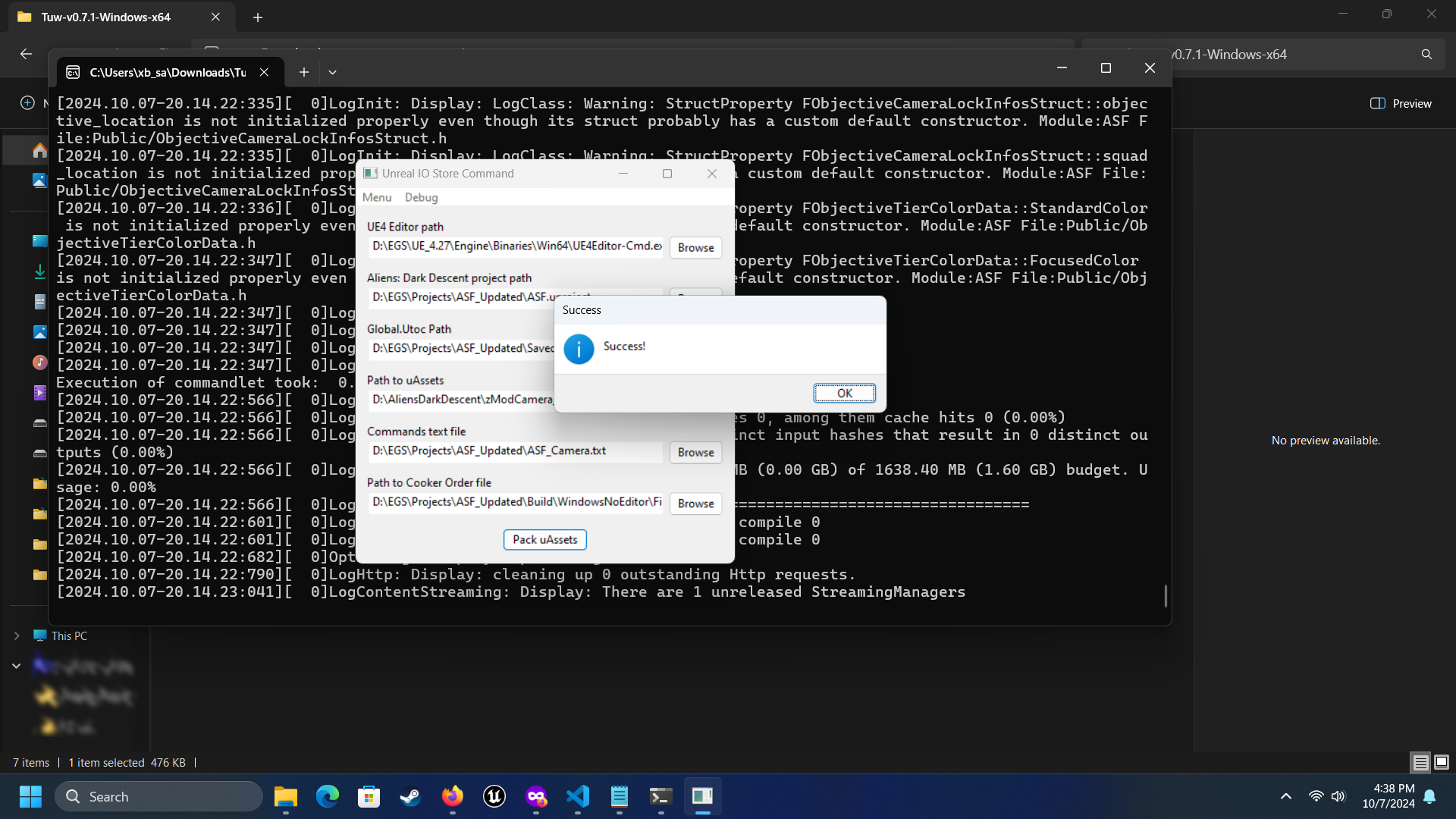Quick Tech Thoughts: Computex 2025

Computex 2025 has just wrapped up, showcasing all sorts of computing related hardware and, of course, lots of AI related things.
This year had some odd surprises, so let's jump into it.
Table of Contents
Intel Surprise #1: Budget AI GPUs for Home Labbers?

Intel's Graphics Card Division has not had a good time, to put it mildly.
While people were excited for the B580 due to its mix of features, performance, and purported low price point, Intel basically couldn't supply the thing at the price people wanted. The B570, a cutdown version of the B580 with reductions in specs and MSRP, basically made no impact. Driver updates have been few and far between, and support for their own software features has been pretty minimal.
So it was shocking to see Intel announce the B50, a half-height, half-length GPU that only uses 70 watts of power.
Why?
Because this is basically a card for budget home labbers. This is the kind of card you can buy and slap into a cheap Dell/HP/Lenovo OEM desktop, as seen below (in gaming and home lab contexts):
These typically cheap, used systems tend to have a few constraints when it comes to provisioning them with new hardware:
- They cannot support full width GPUs (or any other PCIe cards, for that matter).
- The front to back length of the case is typically much shorter than most PC cases.
- They use TFX power supplies with low wattages and limited power connectors.
- Many designs use proprietary motherboards and other components, constraining upgrades.
The B50 meets all the requirements to fit in these systems:
- Half-width.
- Compact length.
- 70 watt power draw can be supplied through the motherboard PCIe slot.
The main constraints on the B50 are:
- Clearance - some of these compact towers do not provide two PCIe slots worth of clearance from the motherboard slot to the power supply.
- Price - the B50 has an MSRP of $300, which may or may not be realistic or achievable on release day.
- Noise - it has a blower fan, which typically have a noise profile that's worse than the typical fan arrangements on other graphics cards.
In exchange, you are getting a GPU that can provide over 3x the TOPs of the best price/performance APUs AMD produces (Strix/Gorgon Point), and 16GB of VRAM. It's pretty hard to beat this combination if you're on a budget.
Intel Surprise #2: $500 24 GB GPUs

The next surprise wasn't necessarily the fact that Intel was producing a 24GB professional card. That had leaked weeks prior to Computex.
What was surprising was the price point: $500.
However, this makes sense when we factor in a few things:
- According to analysts like Moore's Law is Dead, GDDR6 chip prices may be as low as $6 per chip.
- The B580 already had 12GB of VRAM.
- Clamshelling - mounting VRAM chips to the rear of the printed circuit board (PCB) - has become a more common technique for increasing VRAM capacity in GPUs.
- The B580's low MSRP came at the cost of slashing margins as much as possible.
On a technical level, $500 is almost certainly a price where Intel and its add-in board (AIB) partners can make a sustainable amount of profit. From a pure business angle, it's surprising that Intel didn't try to charge more for 24GB of VRAM, given how its competitors (AMD and Nvidia) handle segmentation.
That said, AI performance is not necessarily this card's strong suite. The performance gains over the B50 are not great, at least going by the TOPs figure. However, what you do get is more VRAM, and therefore a bigger context window, or interaction memory, for an AI.
Intel Surprise #3: A Sub-$1000 Dual GPU
It's not everyday when you get to see old technological concepts return from the dead.
Roughly 15 years ago, GPU AIBs gave up on the idea of combining two GPUs into a single graphics card. There were just too many hurdles in terms of synchronizing the GPUs and their outputs, causing limited software support for those use-cases. Then MaxSun, an Intel AIB, revived it for the B60 professional cards.
Let's get the drawbacks out of the way:
- This card requires a motherboard that can support PCIe bifurcation - splitting the interface from x16 to x8/x8.
- The operating system and AI software will see it as two GPUs.
- It requires using Nvidia's infamous 12 volt High Power connector, which has notorious melting issues.
So, what would anyone use this for? Well, besides running gigantic models or training workloads by splitting the load across two GPUs, the most obvious use case is running two models at the same time with large context windows. For example, running a coding LLM and an image generation model at the same time.
A particularly interesting cybersecurity application is running a generative model alongside Cisco Foundation AI's Foundation-Sec-8B model. What is Foundation-Sec-8B?
Foundation-Sec-8B (Llama-3.1-FoundationAI-SecurityLLM-base-8B) is an open-weight, 8-billion parameter base language model specialized for cybersecurity applications. It extends Llama-3.1-8B model through continued pretraining on a curated corpus of cybersecurity-specific text, including threat intelligence reports, vulnerability databases, incident response documentation, and security standards. It has been trained to understand security concepts, terminology, and practices across multiple security domains. The model is designed to serve as a domain-adapted base model for use in applications such as threat detection, vulnerability assessment, security automation, and attack simulation. Foundation-Sec-8B enables organizations to build AI-driven security tools that can be deployed locally, reducing dependency on cloud-based AI services while maintaining high performance on security-related tasks.
With this graphics card, assuming proper configuration, it would be possible to create an agentic workflow where code is generated in one model, then passed to Foundation-Sec for vulnerability assessment, then return the vulnerability report to the coding model. A 24GB VRAM buffer would be an appropriate size for Foundation-Sec (~16.2 GB)
It should be noted that this particular configuration makes the most sense if you are budget/space/slot constrained and can't afford a system with multiple B60 GPUs.
Or if you have a motherboard with a lot of PCIe 5.0x16 slots, and want to populate every one of them with as many GPUs as possible.
The Intel Hold Up
The primary road block for these products is the fact that they will be releasing as integrated parts of professional products first. In fact, one could say they're a pipe cleaner for the drivers prior to the consumer release.
With a scheduled professional release in Q3 2025, and consumer release in Q4 2025, barring delays, it could be many months before this hardware becomes available, although it would not surprise me if the B50 made its way to consumers sooner than expected.
AMD Getting Serious About ROCM on Windows
It's hard to imagine now, but 15 years ago, AMD was a company on the verge of death.
A bad bet on CPU architecture for the Bulldozer/Piledriver series of CPUs left them in a precarious financial position. While they were able to star clawing their way back to success with their Ryzen CPU architecture in 2017, that bad decision meant that they were at a massive disadvantage against Nvidia. During this period, Nvidia laid down the foundation of its CUDA compute ecosystem, which currently dominates the AI landscape.
Never the less, AMD has an open-source software stack for accelerated computing, called ROCm (Radeon Open Compute Platform). This stack has been largely focused on data center and workstations, so it has high Linux hardware compatibility, but very poor Windows compatibility. This is a pretty big issue, because AMD's own hardware cannot run CUDA - and the conversion layer, ZLUDA, is a pain to install and troubleshoot.

AMD announced official Windows support at Computex 2025, with specific frameworks either being supported in July (ONNX-EP) or sometime in Q3 (PyTorch). They also enabled support on RDNA 4 graphics cards, which will be relevant a little bit later. Linux support is also expanding to Ubuntu and Red Hat EPEL in the back half of 2025.
AMD Launches a 16GB GPU for $350

As if timed to take the wind out of Intel's sails, AMD announced a new (but known well beforehand) GPU with 16GB VRAM at $350.
(There is also an 8GB version at $300, but literally no one but the most desperate should be paying that much for an 8GB card in 2025.)
Setting aside whether the $350 price will stick, what the RX 9060 XT offers verses the B50 is a mixed set of features:
- 16GB of VRAM.
- ROCm acceleration support.
- Up to 182 watt power draw.
- Release date inside of 2 weeks.
The interesting thing with RDNA 4, and AMD GPUs in general, is that despite ROCm not being available on Windows, it is not necessary for decent performance in text LLM inferencing tasks. Many chat interfaces rely on Llama, an open source inferencing software library. The library has support for a variety of APIs and frameworks, including Vulkan (an open-source graphics API). Meaning that if someone only wanted to experiment with text only Generative AI, the 9060 XT (16GB) might be a decent budget option in the current market.
The TP-Link Ban Idea Returns; Still No Solution to the Obvious Consequences
This is something that I was keeping an eye on in January, in the lead up to CES 2025, and has resurfaced after a months long hibernation:
A group of Republican lawmakers are urging the Trump administration to ban sales of TP-Link networking products, including the company’s popular Wi-Fi routers.
The Commerce, Defense, and Justice Departments have reportedly been investigating TP-Link for national security risks. On Wednesday, the lawmakers—including 12 GOP senators—wrote to the Commerce Department to voice support for its investigation, and called on the White House to block further sales of TP-Link products in the US.
I have no problem with the argument or the sentiment. The problem is that there's also no sign of thought about what happens after the requested investigation. And I mean from both the government and private sector. This is not particularly surprising from the government, given all the strife lately, but it is concerning that router manufacturers don't seem to be rising to the challenge of filling the void that would be caused by TP-Link routers being outright banned by the US government.
Given the supply disruptions we've seen due to the Trump administration's use of tariffs as a negotiation tool, it's highly likely that if router manufacturers don't start a gradual increase in supply, there'll be a painful run on routers if the TP-Link ban goes through.
Of course, the best solution would be providing a simple, effective way to replace the firmware on these devices with up-to-date versions of OpenWRT, a router operating system. Unfortunately, with only a fraction of TP-Link devices currently supported, it looks like a lot of Americans will be paying an unforeseen price for their past IT equipment choices.

